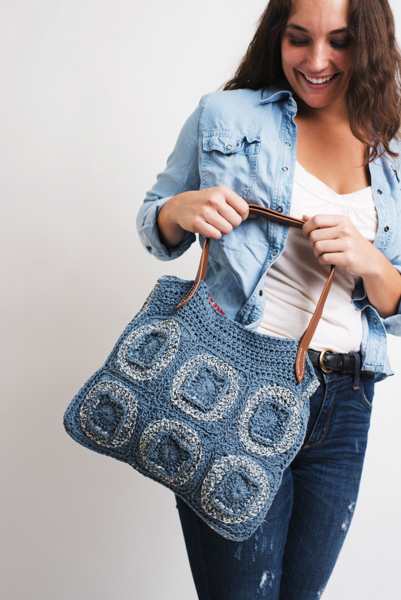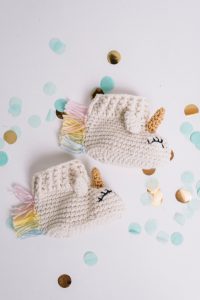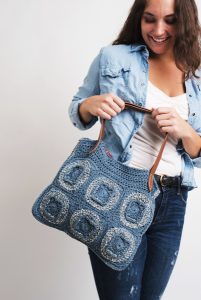
When I first got back into crochet, when pregnant with my eldest, I can distinctly remember my delight at how much crochet there was to be found everywhere; so much in magazines, in books, on dedicated crochet blogs and a positive plethora of patterns on the web … and then I got a little bewildered.
Rather upsettingly I hadn’t known that there were different types of crochet terminology. Being British my mum and Nana had taught me what they knew, which was UK terms, and now I was entering an eye-opening realm of familiar-named stitches meaning one thing to me and something entirely different to others!
Without any sort of crochet terminology standardization, it’s so easy to misunderstand a pattern when stitches have the same name and the variance is enough to create mayhem if they are worked in the wrong way. After I discovered the difference, I challenged myself to become bi-crochet lingual and I’ve never looked back – in fact, it has probably helped shape me into the designer I am today as it opened up so many more possibilities of things I could crochet.
I thought I’d share with you some of the methods I use to tell UK vs US crochet terms apart. First though, I’ve included this handy terms chart so you can see the differences (and use it for converting UK to US crochet terms and vice versa):
| US | UK | ||
| chain | ch | chain | ch |
| slip stitch | sl st | slip stitch | ss / sl st |
| single crochet | sc | double crochet | dc |
| half double crochet | hdc | half treble | htr |
| double crochet | dc | treble | tr |
| treble or triple | tr / tc | double treble | dtr |
It’s easy to see why the two sets of terms cause problems, isn’t it? But one way to look at it is that UK stitches are one step up from US stitches. So for example, the US single crochet is the same as the UK double crochet and the US double crochet is the same as the UK treble crochet.
And there are other ways to tell if it’s a US or a UK pattern before you start hooking:
- Read the blurb on the pattern, in the book, or in the About Me section on someone’s blog. Many designers and publishers now state which crochet terminology they are writing the pattern in.
- Stitches are still probably one of the quickest and easiest ways to interpret the crochet terminology. The key stitches to look out for are sc or hdc – only US patterns have those and htr will only appear in a UK pattern. If the pattern has neither of these stitches, then you might have to look at the hooks or yarn for hints.
- Hook sizes generally in modern UK patterns are written in the metric system (e.g. mm for milimeters) whereas US hook sizes are usually indicated by letters (e.g. G = 4mm). If there is a 2mm, 2.5mm or 3mm hook size stated then it’s most likely to be a UK pattern as the US sizes start with 1/B (2.25mm), C (2.75mm) and D (3.25mm).
- Continuing with the metric system as evidence to figure out the terminology; UK patterns not only have hook sizes in millimetres but the item measurements are likely to be in centimetres (cm) rather than inches. They are also more likely to have yarn measured in grams (g) rather than yards (yds).
- You could also check words and spelling in the pattern; if the word “color” is spelled “colour,” then that’s a big sign that you’re reading a UK pattern. Also US patterns are far more likely to use the word “skein” in yarn descriptions, whereas in UK crochet terminology it may be referred to as a “ball” of yarn.
- Finally, another clue when looking at the yarn is to see how the yarn thickness is described. In US patterns, you are likely to see fingering, sport, worsted or bulky. UK patterns often use the ply count of yarn so 3ply, 4ply, 8ply or Double Knit, Aran and Chunky. Here’s a handy chart to help you distinguish between US and UK yarn weights:
US UK Laceweight 1 ply Fingering 2 ply Sock 3 ply Sport 4 ply DK/Light Worsted DK Worsted Aran Bulky Chunky Super Bulky Super Chunky
I hope that this has helped with your understanding of US and UK crochet terms. And although you are probably more than comfortable working with US crochet terms, I really do recommend familiarizing yourself with UK terms as well. Not that I’m biased (honest!), but there really are lots of amazing UK crochet patterns out there just waiting to be hooked! Being bi-crochet lingual opens so many artistic doors. One of my favorite things about designing for an American publication is having the chance to practice my US crochet terminology skills. Try out some of my favorite designs:
Cowl | Unicorn Booties | Bag






it would be good if there was an American to UK wool conversion chart
UK/US Wool conversion chart – scroll down to the bottom of the page – http://www.woolwarehouse.co.uk/needle-size-yarn-weight-information